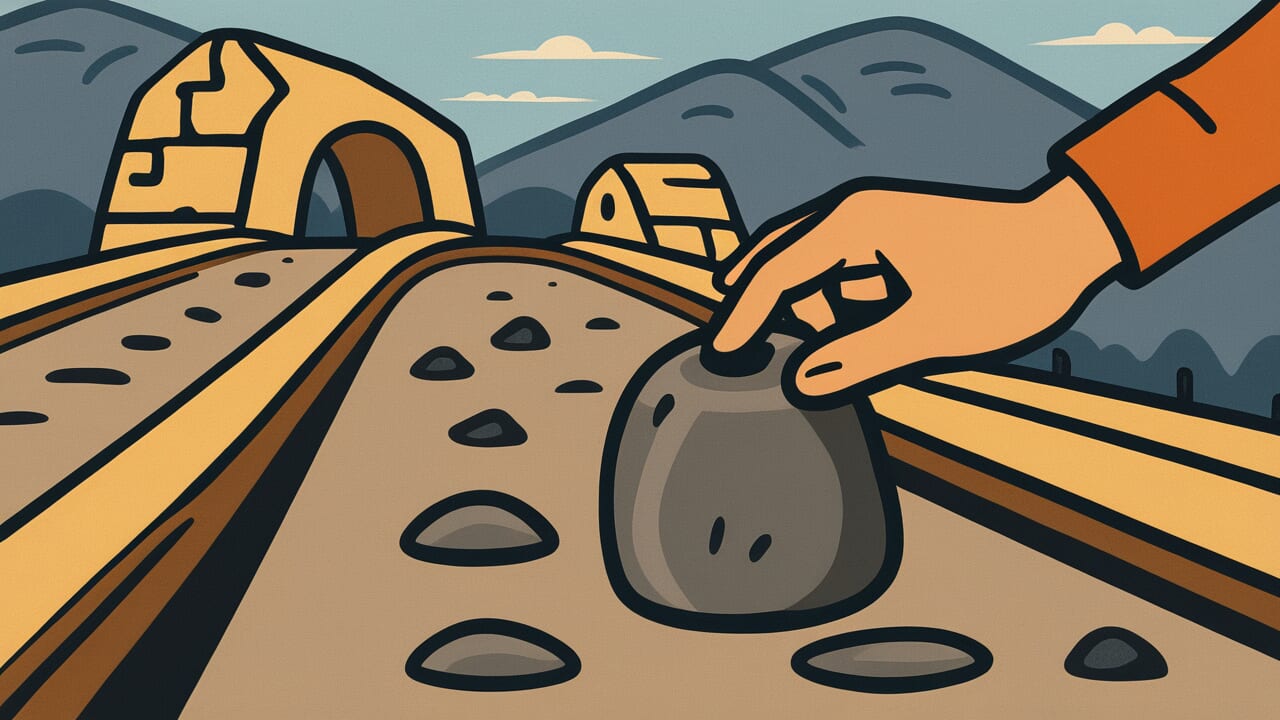How to Read “Knock on a stone bridge before crossing it”
Ishibashi wo tataite wataru
Meaning of “Knock on a stone bridge before crossing it”
This proverb teaches us to proceed carefully and cautiously in all matters. Even a stone bridge, which is sturdy and safe, should be knocked on and checked before crossing.
This shows the importance of thorough preparation and confirmation, even when something seems completely reliable.
People use this saying when starting a new business, making important decisions, or advising someone to act carefully.
It’s especially common in situations where failure cannot be tolerated or where mistakes might lead to irreversible consequences.
Today, people understand this as a lesson about risk management. Even when everything looks fine, you should double-check and triple-check.
This careful attitude is the path to success.
Origin and Etymology
The exact origin of this proverb isn’t clearly documented. However, people were already using it widely during the Edo period.
The structure of the phrase itself is quite interesting.
A stone bridge is a sturdy bridge made of stone. Unlike wooden bridges, stone bridges don’t collapse easily.
They’re naturally the safest type of bridge. Yet the proverb suggests knocking on it to check safety before crossing.
This represents extremely cautious behavior.
Japan’s geography likely influenced the creation of this expression. Japan has many mountains and many rivers.
Bridges were essential to people’s lives, but they also brought danger. Floods washed away bridges, and old bridges collapsed.
These accidents were not uncommon.
The act of “knocking” is also important. By knocking, you check the bridge’s strength.
This means you don’t just look at it. You physically test it to confirm safety.
People understood this not as mere worry, but as a rational verification process.
This everyday wisdom gradually became a proverb about being careful in all aspects of life.
Usage Examples
- A new investment opportunity came up, but with a “knock on a stone bridge before crossing it” mindset, let’s consult an expert first
- She’s the type to knock on a stone bridge before crossing it, so she’ll read every word of the contract before signing
Universal Wisdom
Humans instinctively want to avoid danger. But at the same time, we face the reality that we must move forward.
This proverb addresses a universal human challenge: how to balance these two conflicting needs.
What’s interesting is that the proverb doesn’t say “don’t cross.” It doesn’t recommend becoming so cautious that you never act.
Instead, it assumes you will cross after checking. This isn’t about affirming cowardice.
It’s about teaching wise courage.
Everyone fears failure. We especially fear irreversible failures that hurt ourselves or people we care about.
But if fear stops us from doing anything, life cannot move forward.
That’s why our ancestors showed us the specific action of “knocking.” When you feel anxious, don’t just stand still.
Take the positive action of checking.
This wisdom has been passed down for hundreds of years because humans always live with uncertainty. Perfect information never exists.
Yet we must still make decisions and take action. What we need in those moments is this attitude of “knocking.”
Combining both caution and action is the secret to living life wisely. Our ancestors understood this truth deeply.
When AI Hears This
Looking at the act of knocking on a stone bridge mathematically reveals a probability calculation process that humans perform unconsciously.
Initially, we have vague confidence in the stone bridge: “It’s probably okay.” This is the prior probability in Bayesian estimation.
For example, a feeling that “it’s probably about 70 percent safe.”
What’s important is that knocking isn’t just a ritual. It’s an experiment for data collection.
If knocking produces a solid sound, the safety level rises to 85 percent: “Yes, it’s sturdy.”
If you hear a dull sound or find cracks, it drops to 30 percent.
In other words, observation results continuously rewrite the probabilities in your mind. This is the cognitive process called Bayesian updating.
What’s fascinating is why humans knock multiple times. One observation contains errors.
By knocking repeatedly and accumulating information, you increase the accuracy of your probability estimate.
Statistics shows that increasing sample size makes estimates more accurate. This proverb practices that principle through experience.
Even more noteworthy is the decision criterion for finally crossing. You don’t seek perfect 100 percent certainty.
Once you gain sufficient confidence, you move to action. This “decision-making with adequate probability” is humanity’s rational strategy for living in an uncertain world.
Lessons for Today
This proverb teaches you that precisely because we live in a speed-focused era, having the courage to pause and check is essential.
Modern society increasingly demands quick decisions. Social media expects instant reactions.
Business values speed. But that’s exactly why you need to consciously slow down in truly important situations.
Important choices you face include education paths, jobs, relationships, and money decisions.
In these situations, no matter how much others rush you, you have the right to check at your own pace.
Gathering information, consulting experts, and taking time to think carefully isn’t cowardly. It means taking responsibility for your own life.
At the same time, remember that this proverb includes “crossing after checking.” Caution isn’t an excuse to avoid action.
It’s preparation for better action. In your life, value both wise caution and positive action.



Comments